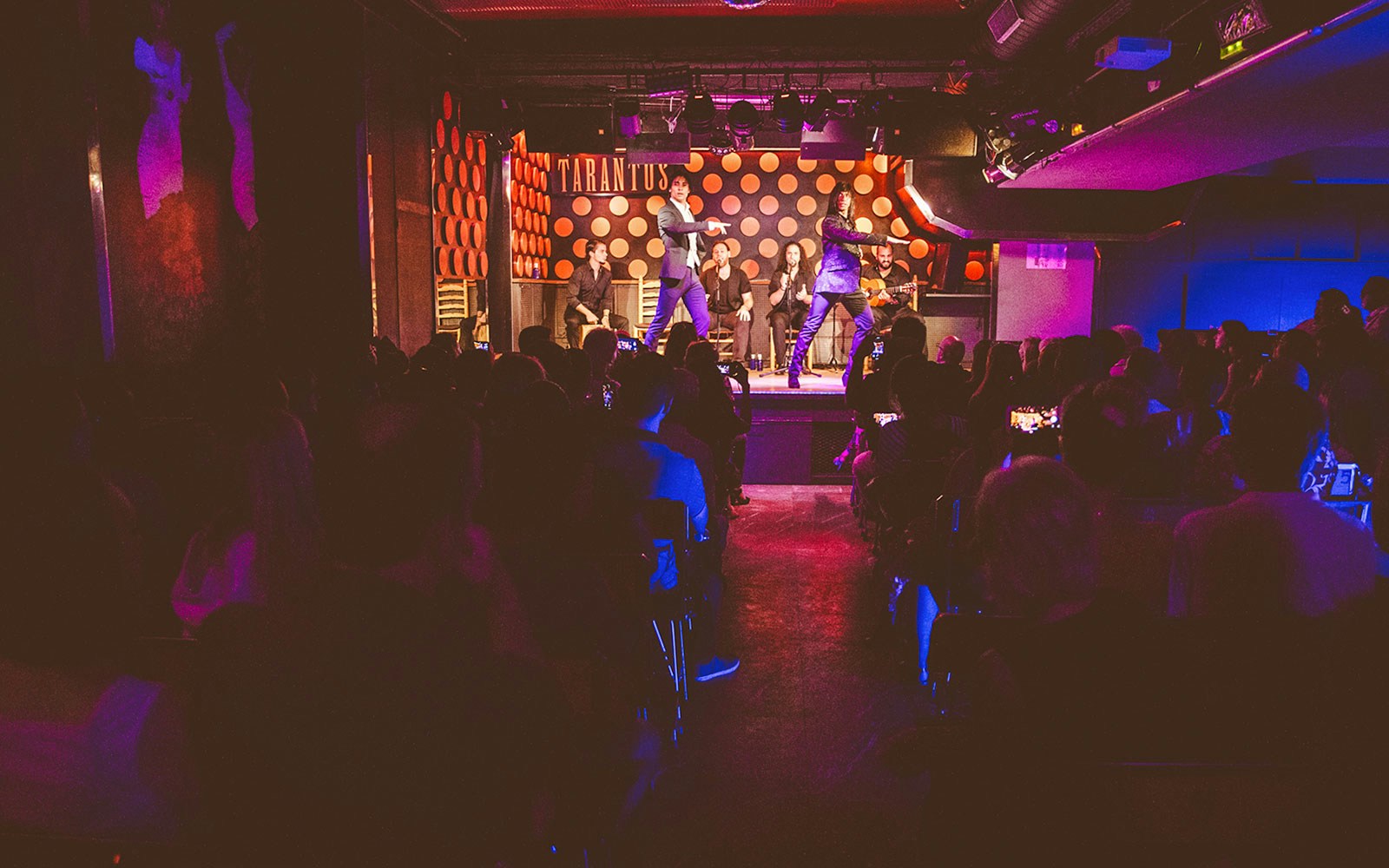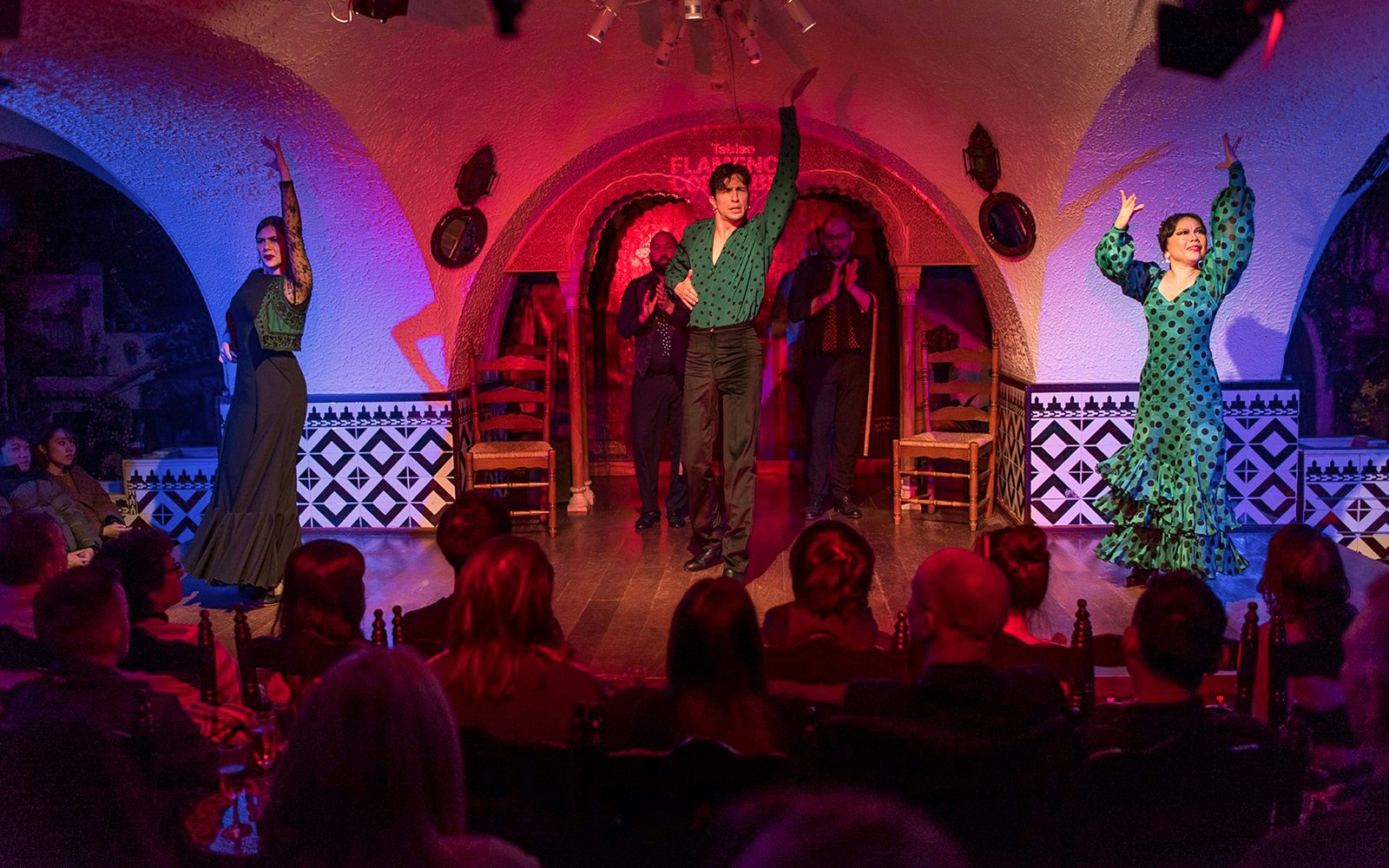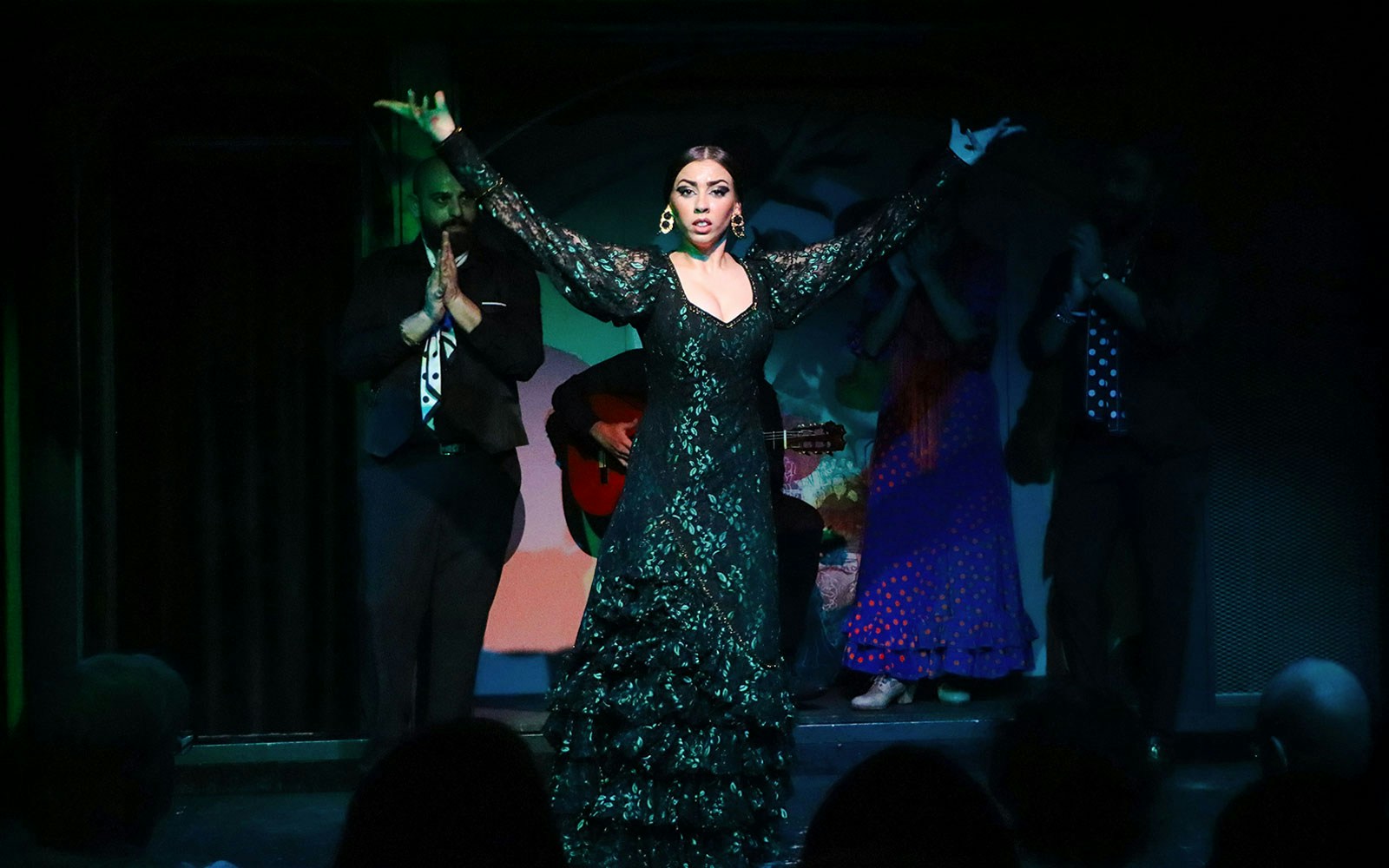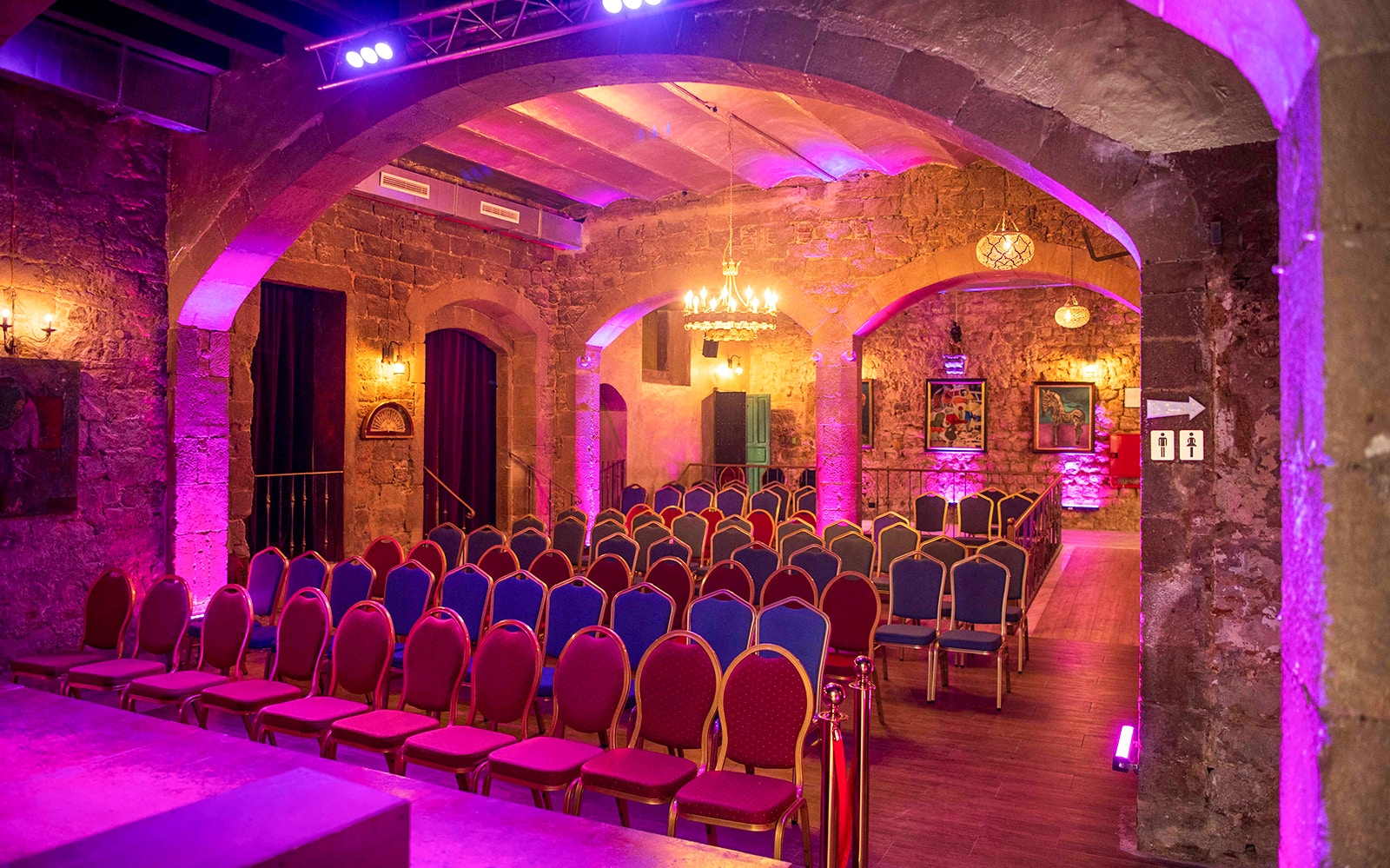Los Tarantos, nestled in the lively Plaça Reial, is one of Barcelona’s oldest tablaos and a true emblem of its nightlife. Opened in the early 1960s, it became a pioneer in offering daily flamenco performances, introducing countless locals and tourists to the art form. Within its intimate space, legends of dance and song have graced the stage, infusing every performance with raw, unfiltered emotion. The tablao’s enduring appeal lies in its atmosphere, simple, electric, and deeply personal, capturing the spirit of flamenco as it was meant to be experienced: close, honest, and passionate.

History of flamenco in Barcelona
The story of flamenco in Barcelona
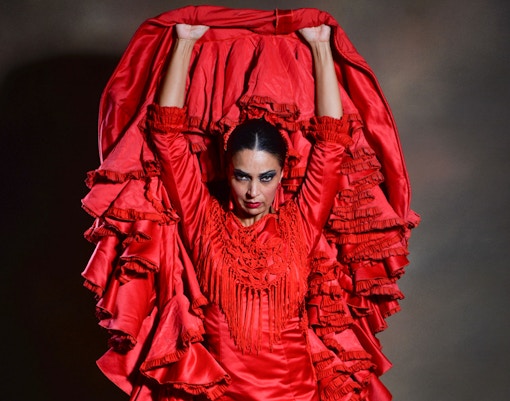
Origins and arrival
Flamenco began as a heartfelt cry of identity and endurance among Andalusia’s diverse communities. When Andalusian artists migrated north in search of new audiences, they brought their music and dance to Barcelona. Here, the art form took on new life, finding eager listeners in a city already rich in art and experimentation. Barcelona’s open spirit and its status as a Mediterranean cultural hub made it the perfect setting for flamenco to evolve beyond its roots.
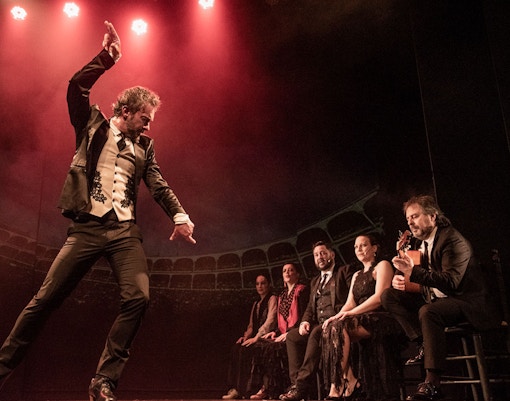
The golden age of Catalan flamenco
By the late 19th century, Barcelona was alive with the rhythm of flamenco. Cafés cantantes sprang up around the Gothic Quarter, hosting passionate performances night after night. The International Expositions of 1888 and 1929 turned flamenco into a cultural symbol of Spain, drawing international visitors who fell in love with its raw emotion and artistry. Flamenco’s popularity soared as artists from Andalusia found welcoming stages and receptive audiences in Catalonia.
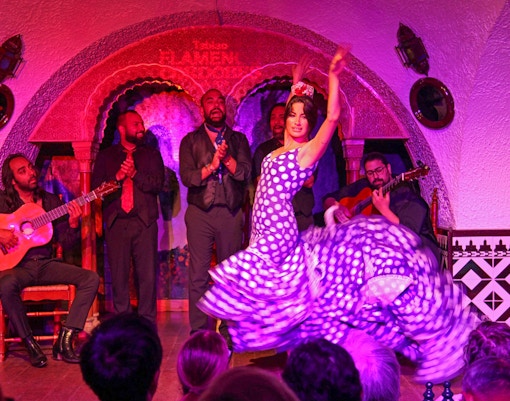
Postwar revival and the tablao tradition
In the mid-20th century, a new kind of venue, the tablao, emerged as the spiritual successor to the cafés cantantes. These intimate settings gave flamenco a home once again, combining authenticity with artistry. The Tablao Flamenco Cordobes, founded in 1970 by Luis Adame and Irene Alba on La Rambla, quickly became one of Spain’s most respected stages. It hosted legendary performers such as Camarón de la Isla, Farruco, and Duquende, preserving flamenco’s purity.
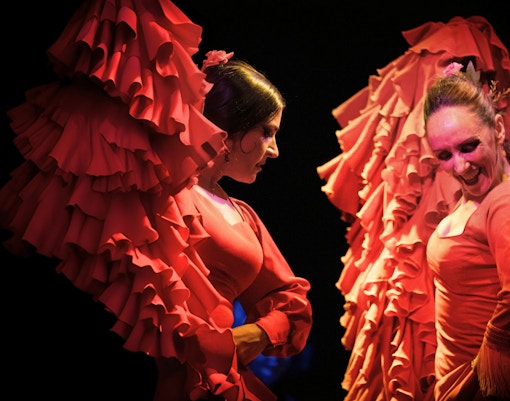
Modern flamenco in Barcelona
Today, flamenco in Barcelona is both a tribute and an evolution. Artists blend traditional palos (styles) with jazz, pop, and contemporary dance, creating new ways to express the same timeless passion. Venues like Tablao de Carmen, Los Tarantos, and Palau Dalmases continue to showcase authentic performances, while newer generations push creative boundaries. The result is a living, breathing art that honors its Andalusian soul while embracing modern Catalan creativity.
Iconic tablaos with a history of flamenco in Barcelona
Los Tarantos
Frequently asked questions about history of flamenco in Barcelona
Barcelona blends Andalusian authenticity with cosmopolitan creativity, resulting in a style that feels both traditional and innovative.
Look for tablaos that focus on live music, traditional palos (flamenco styles), and smaller, more intimate settings. Avoid venues that prioritize flashy production over artistry — true flamenco is about emotion and storytelling.
Absolutely. Flamenco remains a defining part of Barcelona’s cultural identity, attracting both locals and visitors year-round.
Yes, numerous dance academies and cultural centers across Barcelona offer flamenco lessons for all levels.
The Spanish guitar, or 'toque', is the backbone of flamenco. Barcelona’s luthiers and musicians have played a vital role in refining the instrument’s sound.
Most tablaos offer evening performances, usually around 6:00 PM and 8:30 PM, when the ambiance is most vibrant. Late-night shows, often beginning after 10:00 PM, tend to attract the most passionate artists and audiences.
Visit renowned venues like Tablao Cordobes, Tablao de Carmen, Los Tarantos, and Palau Dalmases for unforgettable experiences.
